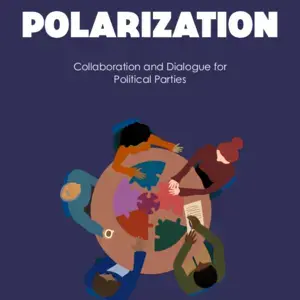By Coen Pustjens, Program Director
The past two decades have seen a major increase in protests, movements and popular uprisings around the world. In spite of a globally pervasive pandemic, citizens from all corners of the world have risen up in demand of democratic rights and to give voice to societal aspirations and injustices. These are not exclusive to any specific geographic region or necessarily organized around similar topics. Examples abound from throughout the world and include the Sudanese Revolution, Hirak Movement in Algeria, the Black Lives Matter protests that erupted around the world in response to the killing of George Floyd, but also the protests in Chile, Thailand, Hong Kong, Nicaragua and Belarus. Although there are movements that aim to undermine democracy, often led by autocrats and illiberal demagogues that aim to undermine democratic principles for their own political gain, most are legitimate popular movements that aspire to make their governing institutions more representative and responsive to average citizens.
When looking at movements merely as national phenomena it can be tempting to disregard them as a passing expression of public dissatisfaction of some kind. But that would be a mistake. When one compares the developments across regions and takes into account that these types of movements have seen a steady increase in numbers and successful campaigns recently, their significance changes. In that context, they are localized examples of increasing democratic deficits and growing socio-economic marginalization in many parts of the world. When perceived as such it becomes clear that these movements are a by-product of the declining attitudes citizens have of their governments, elected officials and the representativeness of their democratic institutions. Data shows that approval ratings have been steadily dropping throughout the world for years and that political parties, elected representatives and parliaments often rank as the least trusted and lowest approved public institutions. It becomes clear then that democratic movements demand further study and inquiry. They beg questions such as how one distinguishes between democratic and un-democratic movements, why some succeed while others implode, what distinguishes them from traditional political parties, what contextual factors affect their emergence and what factors influence their survival?
The impact of these answers can be profound. Organizations supporting democracy, such as the National Democratic Institute, but also democratic practitioners, civil society organizations, academics and activists can benefit from better understanding this phenomenon. Not only because it will allow them to provide better support to these movements, but also by making sure that the democratic void is not filled by illiberal influences, disinformation and anti-democratic spoilers. In other words, increasing our understanding of the potential of successful democratic movements and protests gives democracies a roadmap to inclusive and constructive democratic mobilization and inclusion. Allowing democratic stakeholders and engaged citizens to represent needs and concerns of average citizens and provide more targeted support that will help channel the expectations of citizens. Moreover, supporting and emulating new political actors can ensure that they remain forces of positive democratic change. The alternative is that citizens further alienate from democratic processes, institutions and representatives, become more hardened anti-elitist and see obstruction or even violence as the only remaining option which can ensure that their voices are heard.
What then are some of the lessons that social movements and democratic protests can teach us? We know that movement-based parties (MBP) have more decentralized and horizontal organizational structures, in comparison to traditional parties’ top-down and centralized hierarchies. In addition, MBPs have higher levels of civic participation due to lower engagement thresholds and frequently do not fit neatly into the traditional ideological left-right spectrum. Some of the contextual factors that influence the emergence of MBPs are the type of electoral system a country has, the existence of a free and diverse media landscape and level of digital connectivity, the level of (dis)satisfaction with party systems and the increasing social inequality or economic marginalization.
To note, survival of successful movements are defined by combining horizontal and vertical structures, having decentralized, participatory and bottom-up approaches with centralized, formal political leadership structures. Balancing activism with long-term institutionalization and ensuring cross pollination between the two. Moreover, survival also requires channeling activism into coherent political demands and policies. Support from existing rooted organizations and political insiders, those who know how democratic processes and institutions function and how they can be influenced, is another key factor for survival. As are charismatic leadership and broad societal support or a favorable public opinion.
These and other lessons need to be understood as they can guide program design and support democratic activists. Not only because it allows those working to strengthen democracies to transform and guide movements or protests into democratic allies. But also because targeted interventions and support build avenues through which our democracies can be strengthened, by ensuring citizens have their voices heard and by growing their ability to constructively influence their governing processes, institutions and representatives. If we neglect the lessons of positive democratic change or fail to distinguish between democratic and autocratic movements, it is all too likely that demagogues, disinformation and political opportunism will fill its place. With dire consequences for our fragile democracies. It is our collective obligation to ensure that doesn't happen. Being aware of these developments and understanding movement-based parties allows practitioners, like NDI, to design more effective programs and identify more targeted technical support activities and topics. This is the chief objective of the Institute’s Movement-Based Parties Initiative.




